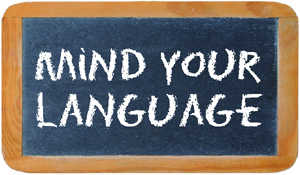Ratna Raman
An old song heralds each New Year. The words “ring out the old and ring in the new” refer to church bells ringing from the belfry, marking the end of morning prayers.
‘Old-new’ are paired antonyms. In this pair both words mean something entirely different from each other.
An antonym is an important word. It migrated into the English language from the French antonyme in the nineteenth century to become the opposite of the synonym. The synonym, a word with Greek origins, syn (same) onuma (name), has been around for well over a century before the antonym made an appearance.
The synonym enables us to identify and connect to points of similarity.
Students wear uniforms to school because it is important that every child wears similar clothes in an equal world. In tropical countries the same uniform cannot be worn to school everyday as clothes need washing. Therefore each student would require at least two identical sets of uniforms. The synonym allows us to appreciate the enormous similitude of human experience.
A large number of synonyms, different words with similar meanings allow us to refer to puddings as sweet, sugary, desserts, for instance. We could use the words; same, similar, uniform and identical, as synonyms, depending on the context. Yet, while all desserts are sweet and sugary, they could easily be puddings or pies. (Stevia and Splenda are chemical antonyms of sugar, but remain synonymous in taste). Antonyms are built into the structure of language as they record difference.
Antonym derives from the Greek ‘anti’ (equal toagainst) ‘onuma’ (name). Words that form antonyms are ‘equal’ and ‘opposite’ to ‘each’ ‘other’. Good and bad, pretty and ugly, bathetic and sublime, love and hate, war and peace, black and white, hot and cold are examples of paired antonyms
The antonym often comes across as more strident than the synonym because it is associated with oppositional stances. The antonym of thesis is antithesis, the antonym of apartheid is anti-apartheid, the antonym of Christ is Anti-Christ. All antonyms however do not have the prefix ‘anti’.
The antonym, despite being a new arrival on the linguistic stage, contributes enormously towards deepening and enriching human articulation. Paired antonyms can be oppositional to each other or follow graded or complementary patterns.
Antonym pairs such as entry-exit, inhale-exhale, day-night, dead-alive, vacant- occupied, have opposite meanings. Yet, if we look closely at the antonyms paired above, we find that they are part of a team. Exits and entrances are essential features of theatre halls and large buildings. Exhaling and inhaling both form part of the breathing process. Living beings can be either alive or dead. Twenty-four hours are divided into night and day. A room can be vacant or occupied. Such antonym pairs, despite different individual word meanings remain complementary. Else we would only get to see one half of the total picture.
Antonyms make for useful symbols of unity in diversity. They convey to us a whole spectrum of experience marked by time. Graded antonyms such as hot-cold, heavy-light, thin-thick, tall-short, empty-full , allow us to recall that each description has a varying range of possibilities in height, heat , weight and so on. For the pessimist a glass holding water seems half-empty, while for the optimist the glass is already half way to being full. The old year has been rolled up and put away. Let us offer a toast to antonyms in the freshly rolled out New Year.










